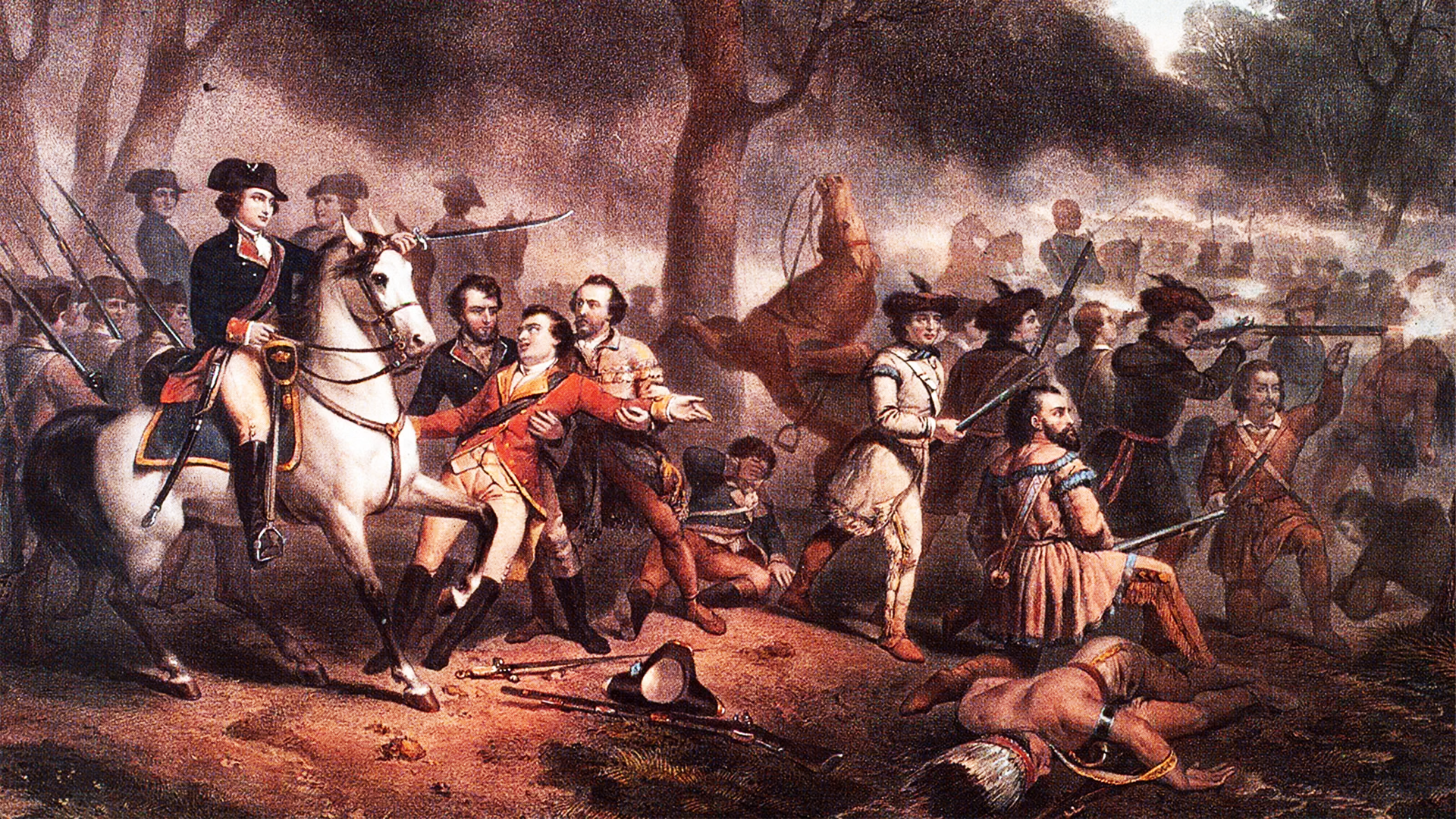The French & Indian War: When Empires Collided and America Took Notice

The French and Indian War wasn’t just about who controlled the Ohio River Valley, it was a global power play between empires.
The Dive
In 1754, deep in the woods of the Ohio River Valley, colonial soldiers under a young George Washington attacked a French scouting party. What seemed like a small skirmish would grow into a global conflict: the French and Indian War—part of a larger showdown between Britain and France called the Seven Years’ War.
At the heart of the fight was land. Both the British and French claimed the same territory, but neither agreed on where the borders were. Native American nations, already living on that land, were pulled into the conflict—some siding with the French, others with the British—each trying to protect their people and power.
Early in the war, things looked bad for the British. French forces, with the help of Native allies, won key victories. General Braddock’s British troops were ambushed and defeated. Forts fell. Morale sank. But then came William Pitt. Appointed as Secretary of State in 1757, Pitt poured money, troops, and energy into the war. He made deals with the colonists, funded their militias, and turned the tide.
By 1759, Britain began winning big: the capture of Quebec was a turning point. In 1760, Montreal surrendered. By 1763, the Treaty of Paris officially ended the war. France gave up Canada and lands east of the Mississippi to Britain. Spain, which had joined the fight late, lost Florida. Britain now ruled a massive swath of North America.
But victory came with a price. The war nearly doubled Britain’s debt. King George III believed the American colonists—who’d benefited from the British military victories—should help pay the bill. Parliament passed new taxes like the Stamp Act and Townshend Acts. Colonists didn’t agree. They had no vote in Parliament and rejected what they called ‘taxation without representation.’
To make matters worse, Britain tried to keep peace with Native American nations by limiting colonial settlement beyond the Appalachians. But colonists, eager to move west, felt betrayed. They had fought and died for that land—and now they were being told to stay put?
Tension grew. What started as a fight between empires had become something more. Colonists began questioning British authority. They protested taxes. They defied policies. And within a decade, they’d take up arms not against France—but against Britain.
The French and Indian War didn’t just change borders. It changed mindsets. Colonists learned to organize, fight, and negotiate. They began to see themselves not as British subjects—but as Americans.
And the irony? The war that secured Britain's hold on North America is the same war that pushed its colonies one step closer to independence.
Why It Matters
The French and Indian War reshaped North America and set the stage for America’s independence. It introduced new ideas about self-governance and fairness. Colonists began to ask hard questions: Who gets to make the rules? Who should pay the costs of empire? And what happens when people decide the answer is no? The echoes of this war helped build a nation that would one day break free from the very empire it once fought to protect.
?
Why did both Britain and France want the Ohio River Valley?
How did the war change the relationship between Britain and its American colonies?
What role did Native American nations play in the French and Indian War?
Why did the colonists oppose paying taxes after the war?
How did this war help spark the American Revolution?
Dig Deeper
The French and Indian War saw two European imperialists go head-to-head over territory and marked the debut of the soldier who would become America's first president.
This episode of Crash Course takes you through the French and Indian War, how it started, and how it laid the groundwork for colonial rebellion.
Related

Life and Society in the Colonial Carolinas
Explore the rise of plantation agriculture, slavery, class divisions, and the shaping of daily life in the colonial South—particularly in North Carolina and South Carolina.

Halifax Resolves and the Road to Revolution
How North Carolina went from protest to the first official call for full independence from Britain.

The Regulator Movement: Backcountry Rebellion Before the Revolution
Long before the American Revolution, farmers in North Carolina were already fighting corruption and demanding justice.
Further Reading
Stay curious!
